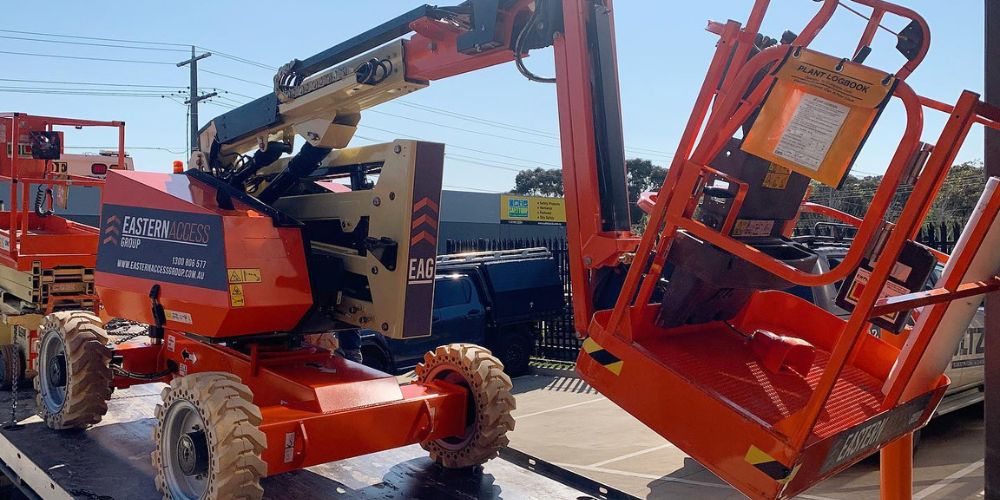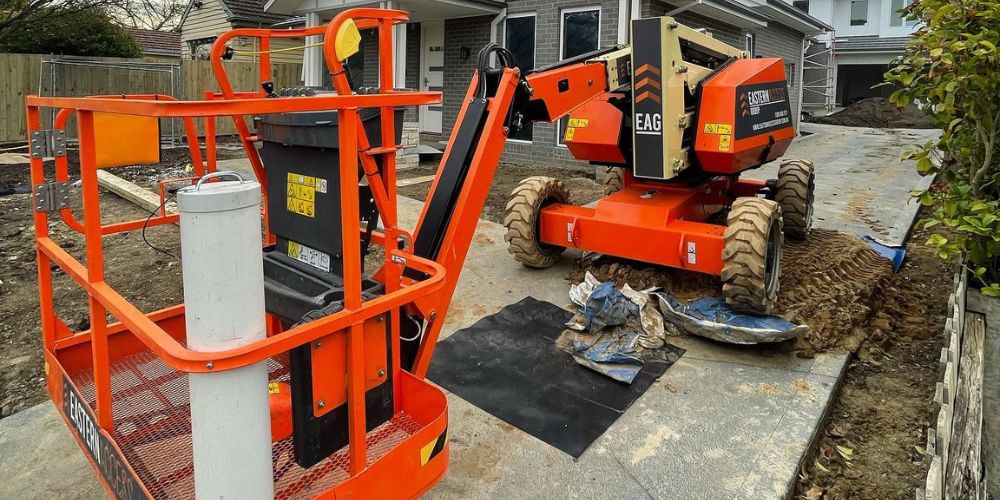Types of Boom Lifts and Their Uses
Table of Contents
Boom lifts have become vital equipment for securely and effectively accessing elevated work areas in today’s fast-paced industry. Boom lifts are a versatile option for operations that demand operating at heights, from building sites to maintenance projects and beyond.
Consider hiring vertical lifts and wonder whether one suits your task or project?
In this blog article, we’ll go through the many types of boom lifts, helping you to decide the best one for your needs. Here, we’ll go further into each to help you determine which is ideal for you.
Let’s get going!

Types of Boom Lifts
Knuckle Boom Lifts
Knuckle boom lifts, also popular as articulating boom lifts or knuckle booms, are a type of aerial work platform with a boom arm with many hinged portions. These parts have more flexibility and maneuverability, making them ideal for reaching over barriers and entering tight or constrained work locations.
Key Features and Advantages
- Flexibility and articulation: Knuckle boom lifts can flex and manoeuvre around obstacles thanks to hinged portions in the boom arm, making them suitable for negotiating limited or congested work environments.
- Versatile Reach: These lifts provide vertical and horizontal reach, allowing for accurate placement and access to hard-to-reach areas.
- Improved Access: Because of its capacity to articulate and reach up and over barriers, knuckle boom lifts are ideal for operations requiring access to high regions with impediments, such as building facades, tree pruning and maintenance in congested areas.
- Compact Design: Since knuckle boom lifts are often smaller than telescopic boom lifts, they are simpler to transport and move about, especially in small rooms or via narrow doors.
- Smooth Operation: They provide precise and fluid control, allowing users to position themselves correctly and accurately carry out activities.
Common Uses
- Construction Maintenance: Knuckle boom lifts are widely employed for building upkeep and repairs, such as window washing, façade upkeep and outside painting.
- Gardening and tree maintenance: They are frequently used in the landscaping and tree care sectors to maintain outside green spaces and perform jobs like hedge and tree pruning.
Industrial Facility - Maintenance: Knuckle boom lifts provide access to equipment, lights, and above structures, making them useful for maintenance work in factories, warehouses, and industrial sites.
- Utility and Telecommunications Services: Thanks to their adaptable reach and manoeuvrability, they are used for the maintenance and installation of telecommunications equipment, power lines, and utility poles.
- Movies and photos: In film and photographic projects, knuckle boom lifts are frequently used to put up camera platforms, place lighting equipment, and take aerial pictures.
Telescopic Boom Lifts
Telescopic boom lifts are aerial work platform types with a straight, extended arm or boom. They are also known as straight boom lifts or stick booms. The boom comprises many parts that may be extended telescopically for improved vertical and horizontal reach.
Key Features and Advantages
- Reach that is impressive: Telescopic boom lifts have the exceptional vertical and horizontal reach, making them suitable for reaching high or distant work locations.
- Maximum Weight Capacity: These lifts have a larger weight capacity than other varieties, allowing them to transfer large equipment or many employees.
- Stability: Telescopic boom lifts are well-known for their stability, owing to their sturdy design and outriggers, which improve stability on uneven terrain.
- Quick Installation: They are simple to set up and deploy, allowing for faster operation and less downtime.
- Capabilities for All Terrain: Many telescopic boom lifts include rough-terrain capabilities, allowing them to negotiate uneven or difficult conditions.
Common Uses
- Sites of Construction: Telescopic boom lifts are frequently employed in construction projects for steel erection, building maintenance and HVAC system installation.
- Maintenance of Industrial Equipment: They are perfect for large industrial facilities’ maintenance and repair work, such as equipment inspections, lighting installations, and overhead repairs.
- Maintenance of Utility and Powerlines: Powerline maintenance, tree pruning, and utility pole construction are common uses for telescopic boom lifts.
- Production of a film: Telescopic boom lifts are used in the film and entertainment industries to set up lighting setups, capture aerial images, and facilitate production logistics.
- Outdoor Activities: These lifts are used for event settings such as signage installation, stage setup, and providing higher camera platforms.
Trailer Mount Boom Lifts
A transportable raised work platform that can be readily towed behind a vehicle is a trailer mount boom lift, sometimes referred to as a towable boom lift or a trailer-mounted aerial lift. These lifts can be easily transported and deployed to various job locations since they are installed on a trailer chassis.
Key Features and Advantages
- Mobility and Portability: Trailer-mount boom lifts are the perfect choice for contractors and enterprises that need flexibility and mobility because of the ease of transfer between job sites provided by the trailer-mounted design.
- Deployment & Quick Setup: These lifts can be swiftly set up and prepared for use, reducing downtime and boosting production.
- Height and Reach Flexibility: Trailer mount boom lifts provide a variety of operating heights and horizontal reaches, enabling access to high regions for various applications.
- Cost-Saving Measure: Trailer mount boom lifts can provide a more affordable alternative for gaining access to high work sites than bigger self-propelled boom lifts.
- Manoeuvrability and Stability: These lifts have stabilising outriggers built into their design to offer stability when in use, and they include towing systems for simple manoeuvrability on job sites.
Common Uses
- Maintenance and Repair: Trailer mount boom lifts are frequently used for building maintenance and repair jobs, including painting, cleaning, installing signs and inspecting facades.
- Renovation and construction: These lifts are useful for building projects because they provide employees access to different heights for jobs like putting up roofing, maintaining high buildings and performing building inspections.
- Industry of Events and Entertainment: At outdoor events, concerts and festivals, stages, lighting rigs and audio equipment are frequently put up using trailer mount boom lifts.
- Landscaping and Tree Care: They are appropriate for landscaping chores like tree cutting and trimming, requiring personnel to climb to higher green spaces.
- Communications and utilities: Utility lines, communication devices and power lines are maintained, repaired and installed using trailer mount boom lifts.

Factors to Consider When Choosing Boom Lifts
There are several essential factors to take into account while choosing boom lifts. These factors are essential in choosing the boom lift type and model that best meets your unique demands and specifications.
Here are some essential things to think about:
Applications and objectives
Determine the precise tasks and uses for which you’ll be putting the boom lift to use. Many types of boom lifts are created for diverse purposes and sectors, such as construction, maintenance, gardening, or film production. Understanding your application will influence your choice of the best boom lift.
Required height and reach
Examine the horizontal reach and maximum working height required for your job. Consider the horizontal and vertical distances to access the work areas. Using this information, you may pick a boom lift with the right height and reach capabilities.
Weight limit
Consider the combined weight of the boom lift platform’s personnel, tools, and other items. Ensure the lift you select can securely handle the load by checking its weight capability. Overloading the support might undermine stability and provide safety issues.
Indoors or Outside Use
Choose between using the boom lift whether indoors or outside. Considerations include manoeuvrability, tyre kinds (such as non-marking tyres for interior use), and weather-resistant components if working outside would be impacted.
Terrain features
The terrain where the boom lift will be deployed should be also evaluated. While some boom lifts are better suited to flat or interior surfaces, others are made expressly for rocky terrains. Choose a boom lift with the right characteristics and skills to travel and operate securely on the kind of terrain (such as rough terrain, pavement, uneven ground, etc.).
Power source
Diesel, electric, or hybrid power sources can all be used to operate boom lifts. Consider the power sources accessible at your worksite and any unique specifications or constraints, such as noise or emissions limitations.
Options and features
Consider which settings and features are most useful for your tasks. This might incorporate features like rotating platforms, basket control choices, cutting-edge safety systems, or other accessories to increase productivity and safety.
Considerations for safety
When choosing a boom lift, safety features should come first. Look for stability mechanisms, load sensing systems, emergency controls, and fall safety systems. Verify that the boom lift complies with all applicable safety requirements and laws.
Frequently Asked Questions
When operating a boom lift, safety is of the utmost importance. Proper operator training, wearing appropriate personal protective equipment, conducting pre-operation inspections, adhering to manufacturer guidelines and load capacity limits, using fall protection systems and ensuring a stable and level setup surface are all important safety precautions.
Hiring a boom lift is a typical and cost-effective alternative, particularly for short-term or infrequent tasks. Renting allows you to get the exact type and model of boom lift you need without the long-term commitment and maintenance responsibility of owning one.
Proper training is required to operate a boom lift safely and efficiently. Operators must be taught the model they will use, including equipment controls, safety procedures, fall protection, weight limitations, and emergency protocols. It is critical to be familiar with manufacturer requirements and local legislation. Ongoing training and refresher courses are necessary to keep safety measures current.
Certain boom lifts are built to withstand difficult terrain and uneven surfaces. These vehicles frequently include strong tyres, increased ground clearance, and stability systems to help them traverse and operate safely on difficult terrain. Use a boom lift for tough terrain to guarantee stability and safe operation.
Conclusion
Before making a decision, it is critical to understand the unique characteristics of each type of boom lift and to analyse your requirements carefully. Choosing the proper kind is critical for the best performance and efficiency, whether you demand remarkable height and reach, better manoeuvrability around obstacles, or the flexibility to carry the boom lift effortlessly.
While this blog has offered an overview of the many types of boom lifts, more research and consultation with a man lift hire equipment specialist is recommended. They can give specialised guidance based on your project needs, ensuring you make the best selection possible.

